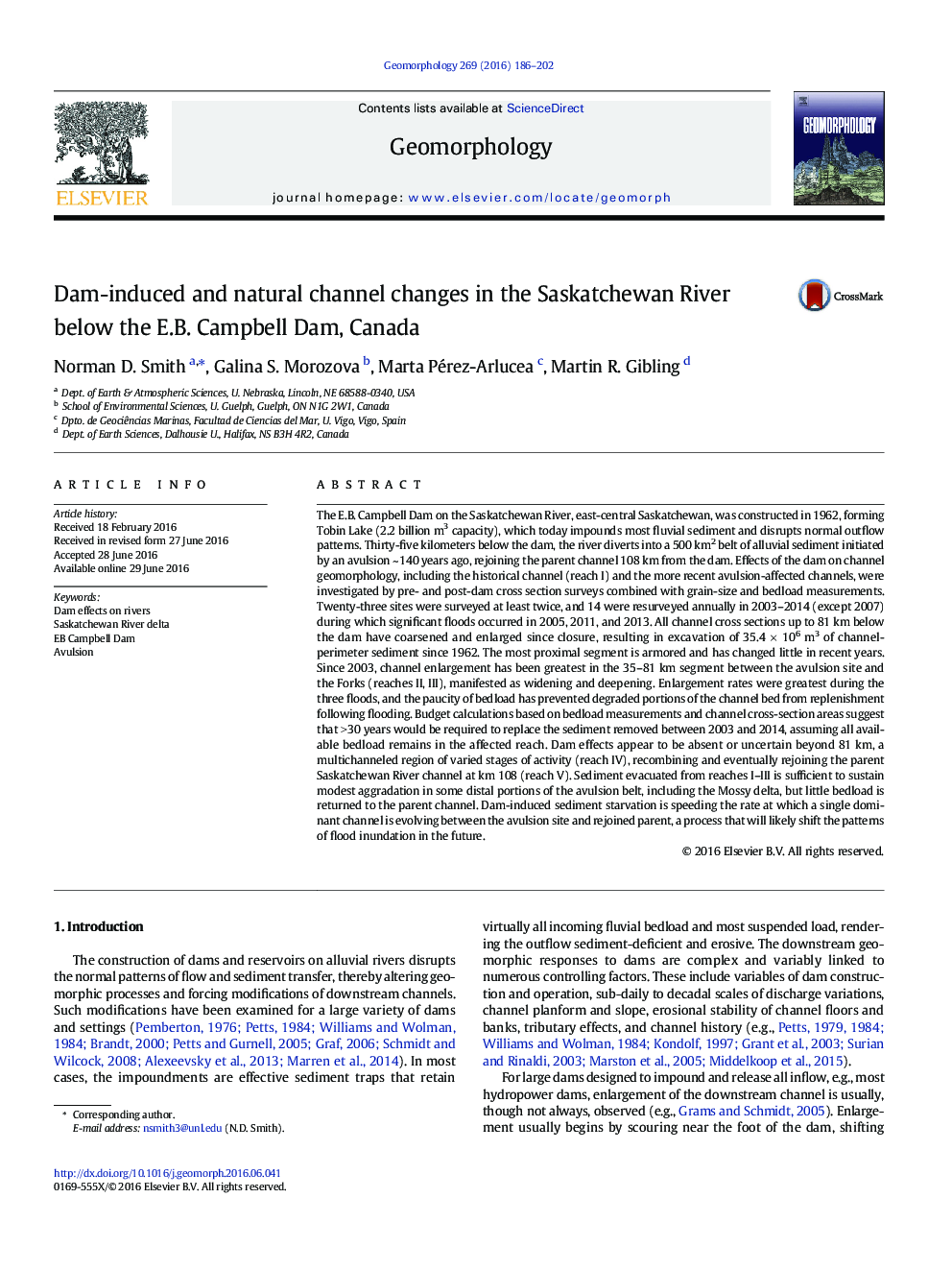| کد مقاله | کد نشریه | سال انتشار | مقاله انگلیسی | نسخه تمام متن |
|---|---|---|---|---|
| 4683941 | 1635380 | 2016 | 17 صفحه PDF | دانلود رایگان |

• All sites 0–81 km below the EBC dam have enlarged since closure in 1962.
• 35.4 × 106 m3 of sediment have been evacuated from below-dam reaches since 1962.
• Other than deposition of evacuated sediment, dam effects beyond 81 km are minimal.
• Three floods dominated channel capacity increases between 2003 and 2014.
• Sediment starvation increases the rate at which a single dominant channel evolves.
The E.B. Campbell Dam on the Saskatchewan River, east-central Saskatchewan, was constructed in 1962, forming Tobin Lake (2.2 billion m3 capacity), which today impounds most fluvial sediment and disrupts normal outflow patterns. Thirty-five kilometers below the dam, the river diverts into a 500 km2 belt of alluvial sediment initiated by an avulsion ~ 140 years ago, rejoining the parent channel 108 km from the dam. Effects of the dam on channel geomorphology, including the historical channel (reach I) and the more recent avulsion-affected channels, were investigated by pre- and post-dam cross section surveys combined with grain-size and bedload measurements. Twenty-three sites were surveyed at least twice, and 14 were resurveyed annually in 2003–2014 (except 2007) during which significant floods occurred in 2005, 2011, and 2013. All channel cross sections up to 81 km below the dam have coarsened and enlarged since closure, resulting in excavation of 35.4 × 106 m3 of channel-perimeter sediment since 1962. The most proximal segment is armored and has changed little in recent years. Since 2003, channel enlargement has been greatest in the 35–81 km segment between the avulsion site and the Forks (reaches II, III), manifested as widening and deepening. Enlargement rates were greatest during the three floods, and the paucity of bedload has prevented degraded portions of the channel bed from replenishment following flooding. Budget calculations based on bedload measurements and channel cross-section areas suggest that > 30 years would be required to replace the sediment removed between 2003 and 2014, assuming all available bedload remains in the affected reach. Dam effects appear to be absent or uncertain beyond 81 km, a multichanneled region of varied stages of activity (reach IV), recombining and eventually rejoining the parent Saskatchewan River channel at km 108 (reach V). Sediment evacuated from reaches I–III is sufficient to sustain modest aggradation in some distal portions of the avulsion belt, including the Mossy delta, but little bedload is returned to the parent channel. Dam-induced sediment starvation is speeding the rate at which a single dominant channel is evolving between the avulsion site and rejoined parent, a process that will likely shift the patterns of flood inundation in the future.
Journal: Geomorphology - Volume 269, 15 September 2016, Pages 186–202